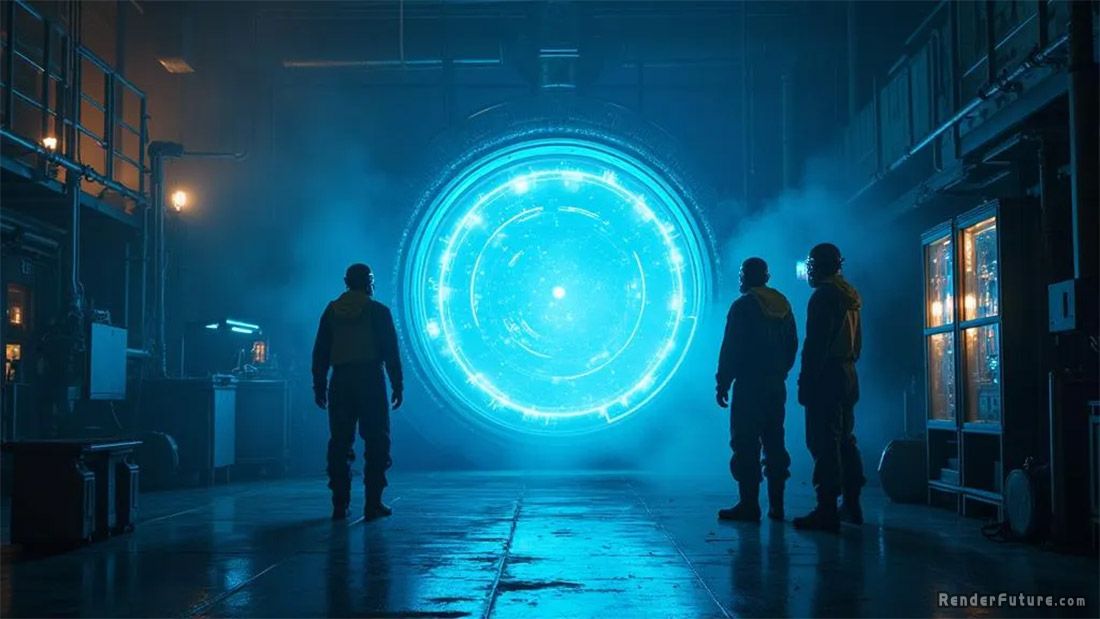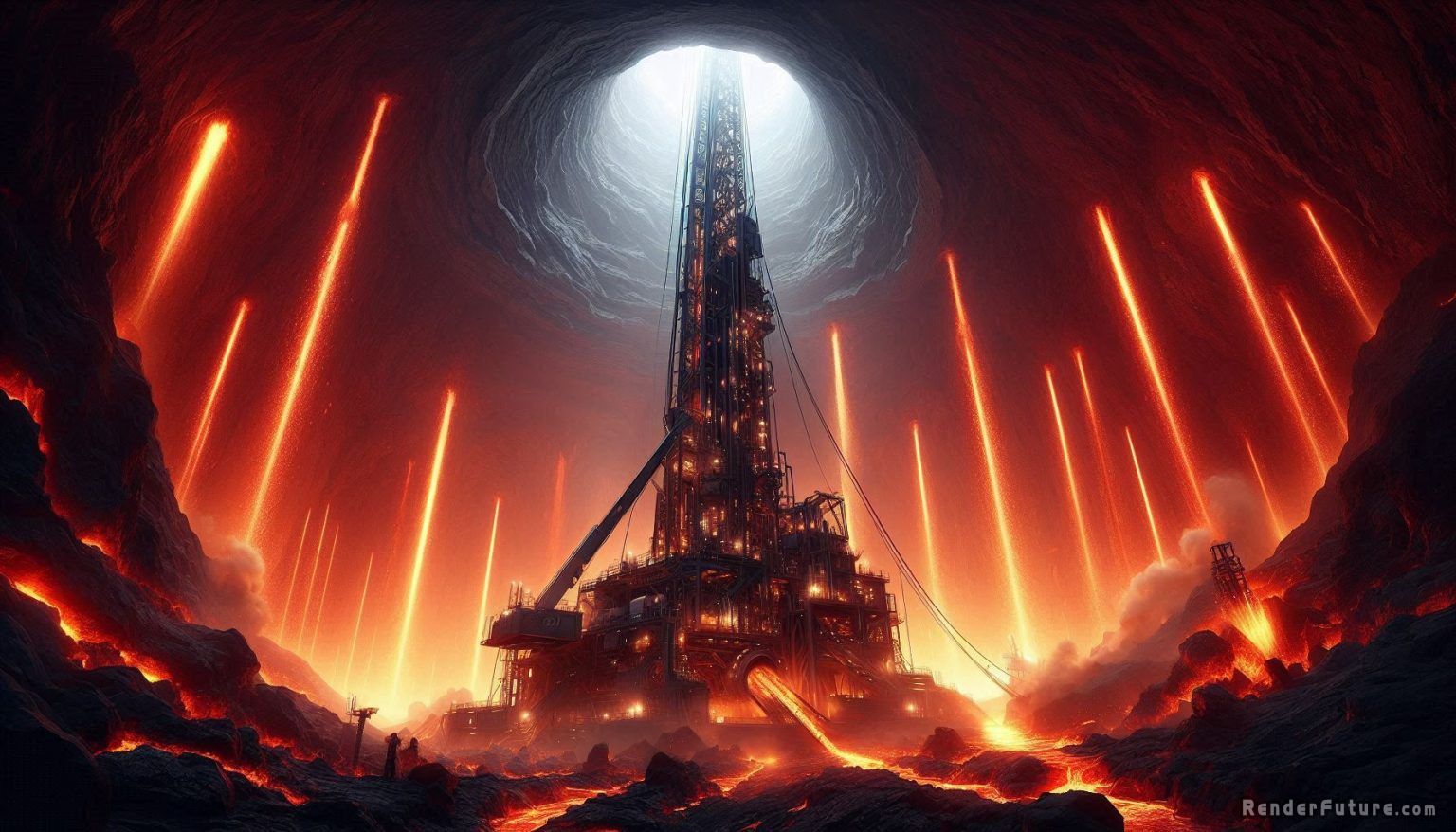Future Energy Breakthroughs That Will Redefine Civilization
The global energy landscape is undergoing transformation
It is so radical it will make our current power infrastructure look as primitive as gas lamps in the age of LEDs. What most people don’t realize is how close we are to energy breakthroughs that sound like science fiction – but are being proven in laboratories right now. This isn’t just about replacing fossil fuels; it’s about completely reimagining how civilization generates and uses power.
The Energy Crisis We Can’t Ignore
 Right now, we rely on a dangerous cocktail of energy sources:
Right now, we rely on a dangerous cocktail of energy sources:
- Oil, coal, and gas (37% of global energy, but cooking the planet)
- Nuclear fission (powerful but plagued by waste and disasters)
- Renewables like solar and wind (clean but inconsistent)
Humanity is now using 60% more energy than in 1990, yet 3 billion people still lack reliable electricity. The contradictions are stark:
- Oil reserves may last less than 50 more years at current consumption
- Solar/Wind provided just 12% of global energy in 2022
- Nuclear fission plants take 15+ years to build
- Battery storage costs must drop 90% to support full renewable grids
We’re approaching a critical juncture in human history. Global energy demand is projected to increase by nearly 50% by 2050, while climate change accelerates at alarming rates. The contradictions in our current system are becoming impossible to ignore:
- Renewables now provide just 12% of global energy despite trillions in investment
- Battery technology would need 10x improvement to fully support renewable grids
- Nuclear fission plants require 15+ years to permit and build
- 3 billion people still cook with polluting fuels that cause 4 million premature deaths annually
Yet beneath these challenges, something extraordinary is happening. The energy technologies that will dominate the second half of the 21st century are being born in laboratories today. Some are already in prototype phase. Others remain theoretical but are grounded in solid science. All have the potential to make our current energy debates obsolete.
The Energy Breakthroughs That Could Save Us
Nuclear Fusion: The Dawn of Star Power
How it works: Mimics the sun by fusing hydrogen atoms into helium, releasing energy.
Latest milestones:
- ITER (France): First plasma expected 2025
- SPARC (MIT/CFS): Compact reactor aiming for 2028 net energy
- Private sector: Helion’s prototype already hits 100 million°C
Why it matters:
✅ No long-lived radioactive waste
✅ Fuel from seawater (deuterium)
✅ One gram of fuel = 8 tons of oil energy
The long-awaited dream of fusion power is finally becoming reality. In December 2022, scientists at Lawrence Livermore National Laboratory achieved the holy grail: a fusion reaction that produced more energy than it consumed. This wasn’t just a theoretical breakthrough – it was practical proof that star power can be harnessed here on Earth.
What makes fusion so revolutionary?
- Fuel comes from seawater (deuterium) and lithium (tritium)
- Produces no long-lived radioactive waste
- Physically cannot melt down – if containment fails, the reaction stops
- Enough fuel exists in seawater to power civilization for millions of years
 Private companies are racing to commercialize this technology. Helion Energy, backed by Sam Altman and Peter Thiel, plans to connect a fusion reactor to the grid by 2028. Their innovative approach uses pulsed magnetic fields to achieve fusion conditions in milliseconds. Commonwealth Fusion, an MIT spin-off, is developing compact reactors using revolutionary high-temperature superconductors that could be built in factories and shipped worldwide.
Private companies are racing to commercialize this technology. Helion Energy, backed by Sam Altman and Peter Thiel, plans to connect a fusion reactor to the grid by 2028. Their innovative approach uses pulsed magnetic fields to achieve fusion conditions in milliseconds. Commonwealth Fusion, an MIT spin-off, is developing compact reactors using revolutionary high-temperature superconductors that could be built in factories and shipped worldwide.
The implications are staggering. A single fusion plant could provide enough clean energy for a mid-sized city indefinitely. Unlike solar and wind, fusion provides constant baseload power unaffected by weather. And because the fuel comes from seawater, it eliminates geopolitical energy conflicts.
Antimatter: The Ultimate Energy Storage
Antimatter is the opposite of normal matter – like its shadow twin. When the two touch, they vanish in a flash of pure energy. Scientists create microscopic amounts using giant machines that smash particles together at incredible speeds. While we can only produce tiny specks today, just a few grains could power an entire city if we could make enough.
 Nothing in physics matches the raw power potential of antimatter. When matter and antimatter meet, they annihilate in a perfect conversion to energy following Einstein’s E=mc² equation. The numbers are mind-boggling:
Nothing in physics matches the raw power potential of antimatter. When matter and antimatter meet, they annihilate in a perfect conversion to energy following Einstein’s E=mc² equation. The numbers are mind-boggling:
- 1 gram of antimatter = 43 kilotons of TNT equivalent
- 10 grams could power New York City for a full day
- 100 kg could send a starship to Alpha Centauri in 40 years
CERN already produces antimatter routinely, though in incredibly small amounts – about 1 billionth of a gram per year. The antimatter is stored in sophisticated magnetic traps cooled to near absolute zero. While producing just 1 gram would currently cost an astronomical $62.5 trillion, several developments could change this:
- Natural antimatter harvesting: Significant amounts of antimatter exist in Earth’s Van Allen belts
- Laser-driven production: New techniques could reduce energy requirements
- Catalytic uses: Tiny amounts could enable other energy processes
The European Space Agency is already studying antimatter propulsion for interstellar missions. While likely decades away from grid-scale use, antimatter represents the ultimate energy storage solution – perfect for applications where weight and efficiency matter most, like space exploration.
Recent theoretical work suggests we might find natural antimatter deposits in space, particularly near pulsars or in the Van Allen belts. Some researchers propose mining these deposits using magnetic scoops, though the engineering challenges remain formidable. More realistically, antimatter may first find use as a catalyst for other energy processes or in medical applications before becoming a primary power source.
Deep Geothermal: Tapping Earth’s Inner Furnace
While wind and solar dominate renewable energy discussions, we’re sitting atop the most reliable energy source imaginable: the Earth’s own heat. Traditional geothermal systems tap into relatively shallow heat sources, but new “superhot rock” technology can access temperatures over 400°C at depths of 15-20 km.
 Iceland’s IDDP-2 well demonstrates the potential. By drilling into magma chambers, engineers created a system that produces 10x more energy than conventional geothermal. The well generates supercritical steam at 427°C – so powerful it can be heard roaring through the pipes from hundreds of meters away.
Iceland’s IDDP-2 well demonstrates the potential. By drilling into magma chambers, engineers created a system that produces 10x more energy than conventional geothermal. The well generates supercritical steam at 427°C – so powerful it can be heard roaring through the pipes from hundreds of meters away.
The global potential is enormous:
- Could provide 2,000x current world energy demand
- Always available, unlike intermittent wind and solar
- Zero emissions and minimal land use
New closed-loop systems eliminate earthquake risks that plagued early geothermal projects. Companies like Quaise Energy are developing millimeter-wave drilling technology that could make deep geothermal accessible anywhere on Earth within a decade.
Hydrogen Power
Green hydrogen – produced using renewable energy to split water molecules – is finally hitting its stride.
 Imagine using water and clean electricity to make fuel. That’s green hydrogen! Giant machines called electrolyzers use wind or solar power to split water into hydrogen and oxygen. The hydrogen gets stored in special tanks (new materials make this safer) and can then:
Imagine using water and clean electricity to make fuel. That’s green hydrogen! Giant machines called electrolyzers use wind or solar power to split water into hydrogen and oxygen. The hydrogen gets stored in special tanks (new materials make this safer) and can then:
- Fuel factories and ships without pollution
- Store clean energy for months (unlike batteries)
- Burn like natural gas but only make water vapor
Germany is building 1,800 km of hydrogen pipelines by 2030. Japan plans entire hydrogen-powered cities for the 2030 Olympics. California is converting its gas peaker plants to hydrogen.
What makes hydrogen so promising?
- Can decarbonize steel production (8% of global CO₂)
- Powers cargo ships (3% of emissions)
- Stores energy for weeks/months, unlike batteries
- New metal-organic framework materials enable safe storage at room temperature
The challenge remains cost. Producing green hydrogen needs to fall below $1/kg to compete with natural gas. But with electrolyzer prices dropping 60% since 2015 and massive scaling underway, this threshold appears achievable by 2030.
Tidal Power: The Moon’s Reliable Gift
Unlike intermittent wind and solar, tidal energy is perfectly predictable centuries in advance. Scotland’s MeyGen project already generates clean power from underwater turbines in the Pentland Firth, where tides race at 5 meters per second. New “bio-mimicry” designs that move like fish tails are making tidal turbines 50% more efficient.
The potential is enormous:
- The UK estimates tidal could supply 20% of its electricity by 2050
- Canada’s Bay of Fundy could power 5 million homes
- Underwater “kite” turbines can harvest energy in slow currents
 What’s holding it back? High upfront costs and concerns about marine ecosystems. But as technology improves and scale increases, tidal could provide clean, reliable baseload power for coastal cities worldwide.
What’s holding it back? High upfront costs and concerns about marine ecosystems. But as technology improves and scale increases, tidal could provide clean, reliable baseload power for coastal cities worldwide.
Zero-Point Energy: Quantum Power From the Vacuum
Here’s where things get truly strange. Quantum physics shows us that empty space isn’t empty at all—it’s a seething sea of particles constantly blinking in and out of existence. This “zero-point energy” theoretically contains unimaginable power if we could learn to harness it. While mainstream science remains skeptical, NASA has quietly investigated concepts like the EmDrive that might—just might—tap into these quantum fluctuations.
The numbers are staggering:
- Every cubic centimeter of empty space contains more potential energy than all the matter in the visible universe
- The Casimir Effect proves these quantum fluctuations exert measurable forces
- NASA’s controversial EmDrive experiments suggested we might one day harness this energy
 While mainstream physics maintains that extracting usable energy from the quantum vacuum would violate thermodynamics, some theorists speculate that advanced civilizations might access it through:
While mainstream physics maintains that extracting usable energy from the quantum vacuum would violate thermodynamics, some theorists speculate that advanced civilizations might access it through:
- Higher-dimensional physics
- Quantum entanglement manipulation
- Exotic matter configurations
The Defense Advanced Research Projects Agency (DARPA) has funded multiple studies into vacuum energy concepts. While likely centuries away from practical application, successful zero-point energy extraction would provide completely clean, inexhaustible power anywhere in the universe.
Bioenergy 2.0: Fuel From Living Systems
The next generation of bioenergy goes far beyond burning wood or corn ethanol. Revolutionary approaches include:
- Algae farms: Producing 30x more fuel per acre than corn, while consuming CO₂
- Engineered bacteria: Modified microorganisms that convert CO₂ directly into ethanol
- Mycelium networks: Fungal systems that generate electricity through biochemical reactions
Singapore already powers buildings using algae biodiesel. California startup NovoNutrients uses engineered bacteria to turn industrial CO₂ emissions into animal feed. The potential is enormous – imagine wastewater treatment plants that produce fuel instead of sludge, or forests of genetically enhanced trees that secrete biofuels.
Space-Based Solar Power
 The concept is simple: collect solar energy in space where the sun always shines, then beam it to Earth as microwaves. While proposed since the 1970s, new technologies are making it feasible:
The concept is simple: collect solar energy in space where the sun always shines, then beam it to Earth as microwaves. While proposed since the 1970s, new technologies are making it feasible:
- Drastically cheaper launches via SpaceX and other providers
- Robotic assembly of massive solar arrays in orbit
- Wireless power transmission tested successfully over kilometers
Japan plans to demonstrate a small-scale system by 2025. The European Space Agency’s SOLARIS initiative could lead to operational satellites by the 2030s. A single kilometer-scale array in geostationary orbit could provide 2 GW of continuous power – equivalent to a large nuclear plant.
Quantum Energy Technologies
 Quantum physics is opening doors to energy concepts that defy classical understanding:
Quantum physics is opening doors to energy concepts that defy classical understanding:
- Quantum batteries with 100% charge/discharge efficiency
- Energy teleportation transferring power without wires
- Room-temperature superconductors that could revolutionize power grids
Researchers at the University of Alberta have already demonstrated quantum batteries that charge faster as they grow larger. While most applications remain decades away, the potential to overcome fundamental limitations of conventional energy systems is profound.
Far-Future Fantasy (That Might Work)
Dyson Spheres: Cosmic Megastructures
Concept: Encase a star in solar collectors to harness its 384 yottawatts output.
Feasibility:
- Would require Mercury’s entire mass for materials
- Self-replicating robots needed for construction
Fun fact: Astronomers search for alien Dyson Spheres by looking for stars with unusual infrared signatures.
 Physicist Freeman Dyson’s 1960 thought experiment proposed that advanced civilizations would eventually build vast structures around stars to capture their energy output. Modern variations include:
Physicist Freeman Dyson’s 1960 thought experiment proposed that advanced civilizations would eventually build vast structures around stars to capture their energy output. Modern variations include:
- Dyson swarms: Billions of orbiting mirrors directing sunlight to receivers
- Partial Dyson arrays: Capturing just 1% of a star’s output = 100,000x Earth’s needs
- Starlifting: Directly extracting hydrogen from stars for fusion fuel
Astronomers are actively searching for signs of these megastructures by looking for stars with unusual infrared signatures. While no definitive evidence exists yet, mysterious objects like Tabby’s Star (KIC 8462852) – which dims unpredictably by up to 22% – continue to intrigue scientists.
Building even a modest Dyson swarm would require:
- Dismantling Mercury for construction materials
- Self-replicating construction robots
- Centuries or millennia of effort
But the payoff would be staggering: enough clean energy to power a Type II civilization capable of interstellar travel and planetary engineering.
Dark Matter Reactors
The hope: If dark matter particles annihilate, they could provide 100x antimatter’s energy.
The catch: We still don’t know what dark matter is, let alone how to bottle it.
The Road Ahead: Challenges and Opportunities
The road to energy transformation will be challenging, but the payoff could be revolutionary. In our children’s lifetimes, we might witness:
✔ Cities powered by miniature suns (fusion reactors)
✔ Spacecraft fueled by antimatter harvested from planetary belts
✔ Quantum energy devices tapping the fabric of space itself
✔ Solar arrays encircling stars to harness their full output
The energy transition won’t be a single “Eureka!” moment but a mosaic of solutions deployed where they make most sense:
- 2030s: Fusion pilots, hydrogen cities, advanced geothermal
- 2040s: Antimatter factories, orbital solar arrays, bioengineered fuels
- 2050+: Quantum energy, Dyson swarm prototypes, vacuum energy research
The obstacles are significant but not insurmountable:
- Materials science needs to advance for fusion and geothermal
- Costs must continue falling for hydrogen and tidal
- International cooperation is crucial for large-scale projects
What’s certain is this: the energy technologies of 2100 will make today’s power plants look as primitive as steam engines. The future isn’t just about maintaining our current lifestyle – it’s about unlocking possibilities we’ve barely begun to imagine.

References and Sources
- ITER Organization
The international nuclear fusion project making star power on Earth
https://www.iter.org - Lawrence Livermore National Laboratory
Breakthrough fusion energy research
https://www.llnl.gov - CERN Antimatter Research
Creating and studying the universe’s most explosive substance
https://home.cern - Scientific American – The Future of Energy
Analysis of emerging energy technologies.
https://www.scientificamerican.com










